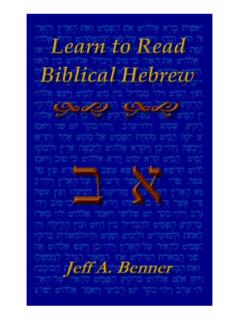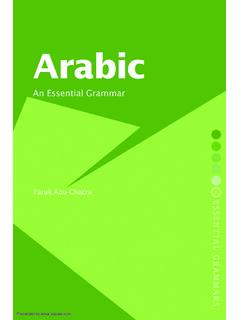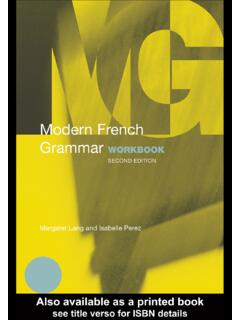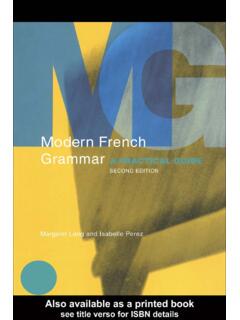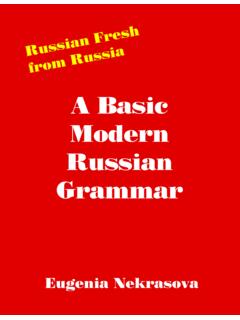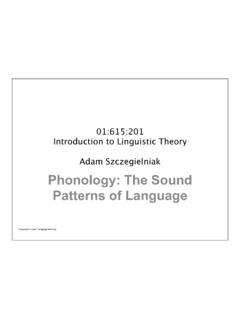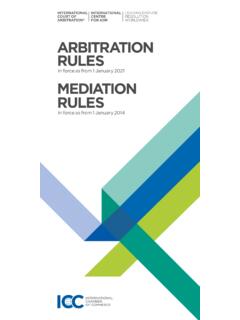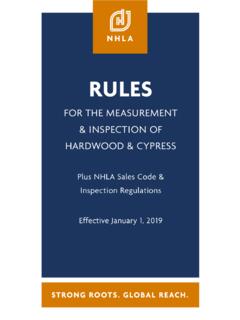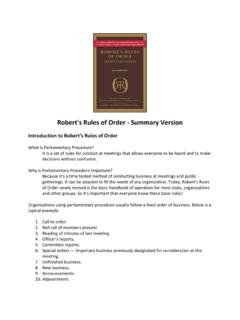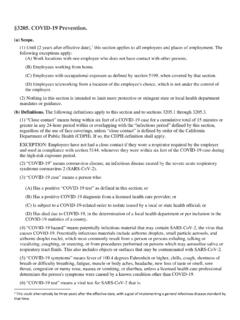Transcription of American Sign Language Grammar Rules
1 1 American sign Language Grammar Rules Twelveth Draft: January 2008 by Kevin Struxness, MA Declarative Sentence Structures English: Subject-Verb-Object I love apple pie. ASL: Subject-Verb-Object I love apple pie. Subject-Verb-Object-Subject I love apple pie I. Object-Subject-Verb Apple pie I love. Verb-Object-Subject Love apple pie I. Object-Verb-Subject Apple pie love I. Interrogative Type: Yes/No Questions Symbol --- Q --- (1) raised eyebrows, 2) tilted or diagonal head with shoulders forward and 3) hold the last sign a little longer)) -- ----------- q ------------- English: Do you want some ice cream?
2 ASL: 1) You want ice cream? (Delete Do ) -------------- q ------------- 2) Ice cream you want some? --- q -- Are you deaf? You deaf? (Delete Are ) ---------- q ---------- Have you met Alexander Graham Bell?
3 You finish meet AGB? (Delete Have ) We use have for possession. ---------- q ---------- Have you been there? You finish touch there? I have a question for you. ( sign a question mark in the air.) Interrogative Type: Wh-Questions (who, what, where, why, how, which, how many, how much) Symbol --- WQ --- (with squeezed eyebrows and tilted or diagonal head) ---- wq ---- English: What time is it? ASL: 1) What time?
4 -- wq - 2) Time? ---------- wq --------- Who is Laurent Clerc? 1) Who Laurent Clerc? Note: if you place who at the beginning, use the non-manual markers from the beginning to the end. -wq - 2) Laurent Clerc who? Note: if you place who at the end, adopt the non-manual markers only at the location of who ------------- wq ------------ 3) Who Laurent Clerc who?
5 Note: if you use a double wh-question, use the non-manual markers from the beginning to the end. 2 Exception: ----- q --- English: How are you? ASL: How you? (This is intended to start a conversation) ----------- q ------------- Why don t we go to the movies? Why not we go movie? (In a state of excitement) --- q ---- Who won the game? Who won? (With strong curiosity) -------- q -------- Where did you find it?
6 Where you find? (In a state of happiness) ---- q ----- --- q ---- Why not? Why not? Or, why-not? (In a state of excitement, not asking for an - explanation) Note: If you use Wh-words for a non-Wh-question function, you keep your facial expression in a neutral manner ASL: I know where Bob work. Mother know what I want. Rhetorical Questions (who, what, where, why, how, how many, what for, how much) Symbol --- RQ --- with raised eyebrows and head tilted down or diagonally. This type of question is used for someone to answer their own questions.
7 It should not be used too much. As a general rule, use the RQ every 15-25 sentences. Many ASL users sign why in the RQ mode as a substitution for because . -- rq -- English: I had pancakes for breakfast. ASL: I breakfast what? pancake. -- rq -- Larry became deaf from a bout of spinal meningitis. Larry become deaf how? spinal meningitis - n - - rq - Mother could not come because she was sick.
8 Mother not come why? she sick. Although this type of question deals with the Wh questions most of the time, the rhetorical question can be used for a yes/no question, too. --- rq ---- - y - Do I want to go? Yes, I want to go. Want go I ? Yes, I want go. Exclamation This situation occurs when someone is excited, surprised or even angry. They increase intensity in signing as well as sign faster. Sometimes they nod their head. English: The San Diego Padres won! ASL: San Diego Padres won! Good! Good! I passed the class! I pass class!
9 He kicked me! He kick me! . Affirmatives Symbol --- y --- (head nodding) - y - English: Tom can sign ASL. ASL: Tom can sign ASL. ------ y ------------ Tom can sign ASL. (This is permissible if the sentence is very brief.) 3 Negatives/Negation Symbol --- n --- (with squeezed eyebrows and headshake) ----- n --- English: I don t have time. ASL: 1) I not have time.
10 ---- n --- 2) I have no/none time. --- n --- 3) Time have no/none I. ---- n --- He no longer works here. He no more work here. -- n - I don t agree. I agree. -- n -- Unable not able Note: The negative sign not can be left out while preserving the negative facial expression.
